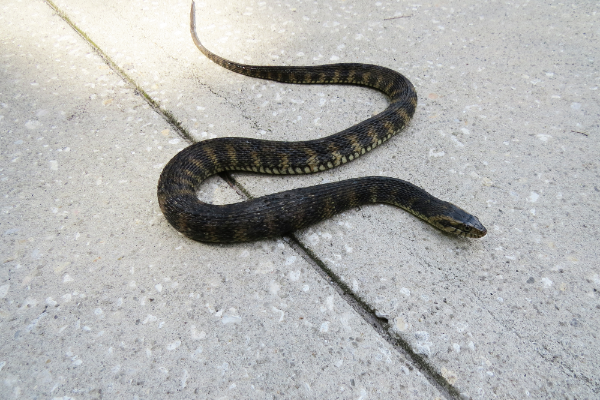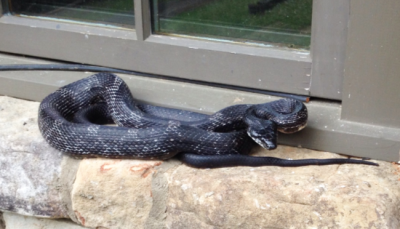Identification
Snake Identification: 4 Key Attributes of Snakes

Most people consider snakes as scary animals. Indeed, the sounds and appearances of snakes can be startling and intimidating. However, even though some species are dangerous, many species pose little to no threats to human beings. As a matter of fact, they perform vital functions in the ecosystem.
Understandably, most people cannot recognize the presence of snakes within a given space until they have a direct encounter with the reptile. However, the good news is that you don’t have to see a snake before you identify their presence. With some useful tips about their behavior, you can easily determine whether a snake is close by or not. If you would like to learn about some key actions to identify a snake, we recommend reading this article to the end. Enjoy reading!
Sounds
The first key attribute of snakes worth keeping in mind is the sounds they make. While most people believe snakes only rattle or hiss, they do much more. Snakes are capable of shrieking and growling, depending on the species. Also, when a snake is cornered, they can start releasing air through the vents in their back-end to create a popping sound called flatulence. Interestingly, these reptiles can even make loud sounds with the aid of a small hole inside their mouth.
Most snake species hiss, especially to scare away a potential predator. A good example of a snake that hisses is the pine snake. Also, due to the vocal cord found inside pine snakes, they are known to bellow, releasing a shriek-like sound in the process. Species such as rattlesnakes possess rattlers with which they make a rattling sound. Furthermore, snake scientists have explained that some species are capable of growling, such as the king cobra. So, if you ever come across a serpent hissing, rattling, or growling, it is advisable to watch your steps.
Droppings
Another little-known factor of recognizing a snake is through their droppings– some even consider it as a mystery. Although it is rare to come across snake poop, it is real. Snakes release sloppy and haphazard excrement. The poop is usually similar to bird poop. However, unlike bird droppings, they often contain fur, nails, teeth, and other digested materials. Also, bird droppings are whiter due to the high level of urea present. On the contrary, snake poop features a small white urea cap.
Considering that snakes have only one opening, the cloaca, they release both liquid and solid waste together. Thus, snake poop is usually moist when still fresh. Additionally, you will rarely find snake poop having form because snakes do not feed on fibers – they are strictly carnivores.
It’s rare to find snake droppings in large quantities since they don’t eat all the time. Also, they are not social animals; thus, they rarely gather. But sometimes, a female serpent can attract male snakes when she is ready to breed. In such a case, you may have a considerable number of snakes in the area. If you ever come across snake poop in a space, you are best advised to leave immediately.
Tracks
Unless you are a snake specialist or intentionally searching for snake paths, you’ll rarely notice the tracks. However, areas where you can easily see snake tracks include sand, dirt, mud, or soil. Also, it’s worth noting that snake tracks can occur in five different forms, depending on their movement. The five forms are as follows:
- Lateral Undulation: Considered as the classic snake locomotion, this type of track can be recognized easily. The lateral undulating track usually involves waves of muscular motion traveling from the upper side of the snake to the end side. Any grass, gravel, sand, or other objects which the snake pushes against will deform temporarily. Consequently, it will create a lateral undulating path.
- Concertina: Not many can recognize concertina locomotion as a snake track. But several snake species often form it. Concertina tracks occur when the snake pulls up the body into bends, then straightens out the curves again. This type of track is usually formed when the snake is trying to contract and expand to pass through a narrow passage or climb.
- Slide-pushing: Here is a very unique and rare track. The slide-pushing path emerges when a snake forcefully pushes itself in a large undulating and sliding motion to move across a surface. Slide-pushing locomotion is usually applied when a snake lies on a smooth surface and is frightened. In such a condition, it’ll try to escape as fast as possible.
- Side-winding: Arguably, this is the most dramatic and famous type of snake track. Most snake species perform side-winding while trying to crawl on a slippery or unstable surface. Slide-winding is when a snake sends waves down the body to roll from head to tail while a portion rises above the ground. This makes the body move forcefully over loose sand or smooth surface.
- Rectilinear Movement: This is close to a straight-line track. The rectilinear track is commonly left behind by large snakes on open ground. This track is created when a snake creates traction with its belly scales. The snake will first raise the scales from the ground, then move them forward. Afterward, it will drop the scale and shift backward. As the snake moves in rectilinear motion, it won’t leave behind any belly scale shape since the snake is sliding and covering them up.
Damage
When snakes feel threatened by potential predators, they can cause damage. However, you should know that not all snakes possess fangs and release toxins. We have venomous snakes and non-venomous snakes. Venomous snakes can bite and release venoms into the prey. Contrary, non-venomous snakes possess rows of teeth and do not release toxins. Thus, damages caused by venomous and non-venomous snakes are slightly different. Below are some of the possible injuries that can emerge from the bites of the two snake categories:
- Venomous snake bites can cause puncture wounds, swelling, pains, redness, face numbness, weakness, dizziness, difficult breathing, headaches, excessive sweating, blurred vision, elevated heart rate, fever, convulsion, and nausea among others.
- Non-venomous snake bites can lead to bleeding, pains, swelling, redness, and itching. Ultimately, it can result in skin infections, death of tissues, and necrosis.
Conclusion
From snake sounds, excrement, movements and bites, hopefully, you now understand some crucial details about snakes. This information will help you recognize their behavior, identify their presence, and keep away from them if necessary. Snakes rarely attack unless threatened. Nevertheless, you should keep away from snakes once you identify their presence.
